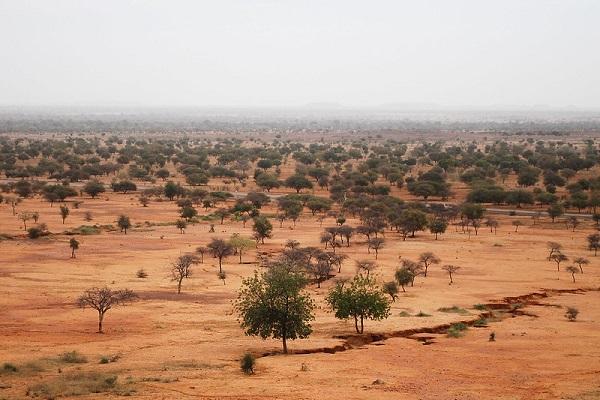Photo by Daniel Tiveau/CIFOR
Just in time to offer practical solutions at the COP27, the unique platform will facilitate the implementation of the climate adaptation agenda .
(SHARM EL SHEIKH, Egypt, 12 November 2022) – As climate change impacts ripple across the globe, forests and tree-based systems offer both a major way for adaptation – and a critical mitigation opportunity. Channeling this potential aligns well with international priorities: COP27’s Presidency just launched an Adaptation Agenda to build climate resilience for four billion people living in the most climate-vulnerable communities by 2030. Forests, trees, and agroforestry offer considerable adaptation potential. Leveraging this potential requires countries and actors to dispose of appropriate knowledge, solutions, enabling conditions, and implementation support in a range of contexts.
On 12 November, at the Global Landscapes Forum (GLF) Climate event in Sharm el-Sheikh, the Center for International Forestry Research–World Agroforestry Centre (CIFOR-ICRAF) launched a new transformative partnership platform, TreesAdapt. The platform answers the growing demand for adaptation; enhancing forests, trees, and agroforestry’s contribution; and supporting countries and actors to effectively implement solutions.
“Adaptation of forests and trees, adaptation with forests and trees, and mitigation with forests and trees are intrinsically linked,” said Vincent Gitz, CIFOR-ICRAF’s Director of Program and Platforms, during the launch. “Adaptation is the immediate concern of local actors. Focusing on adaptation thus facilitates their engagement. It is because of the recognized and increased benefits provided by forests and trees that local communities have the interest to facilitate and support their adaptation, conservation, and sustainable management – which in turn are indispensable for their long-term contribution to mitigation.”
Cécile Ndjebet, the president of an African women’s forestry network, REFACOF, highlighted the importance of gender inclusivity and awareness when leveraging trees for adaptation. “For us, [the approach] will only make sense if it takes into account what women are doing in the forest sector, what challenges women are facing there, and how we can improve their situations,” she said. “For rural and Indigenous women, trees for adaptation should address three main issues: tenure security; value chain development for the activities they are conducting; and networking and learning among women worldwide – across continents, across countries, and across communities.”
From farm to landscape level, it is crucial to identify what is the right tree for the right place – for the right purpose. This requires the combination of ancestral farmers’ knowledge with scientific knowledge in concertation with concerned actors. Peter Minang, Director for Africa and Principal Scientist at CIFOR-ICRAF, said that effective and accessible decision support tools are essential to adaptation. Minang highlighted that the platform would also take into account nutrition. “There is the food security part of it. Are you having enough food in terms of quantity and also in terms of quality?” He referred to the fruit trees portfolios, which aim to guide fruit production so that farmers and villages can cultivate an array of different trees that complement, over the seasons, the different gaps in nutrients and vitamins – depending on the fruit nutrient composition.
”We still need to enhance ambition and mitigation, but now we really need to focus on the adaptation services that forests and trees provide, as well as on the resilience of forests and trees themselves,” said Amy Duchelle, Senior Forestry Officer and Team Leader of Climate Change and Resilience in FAO’s Forestry Division, and noted four ways in which the FAO will engage with the TreesAdapt platform initiative: co-produce knowledge products from FAO’s policy lens, leverage FAO’s national forest monitoring tools, support efforts to enhance the trees and forests contribution to the cross-sectoral implementation of Nationally determined contributions (NDCs) and National adaptation plans (NAPs), and help countries access climate finance to put trees and forest-based adaptation options into action.
The experts stressed the need for immediate action, and the fact that trees can critically help the world adapt to a climate that will be much different. Therefore, TreesAdapt supports adaptation now, for tomorrow and future generations, while generating mitigation and other co-benefits.
#GLFClimate #TreesAdapt #Trees4Resilience












